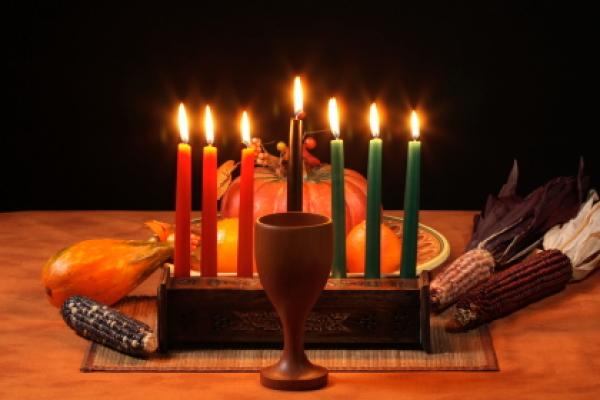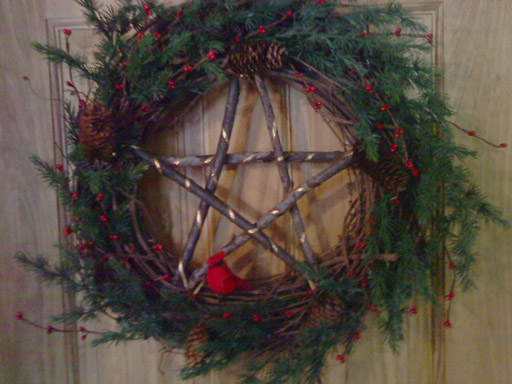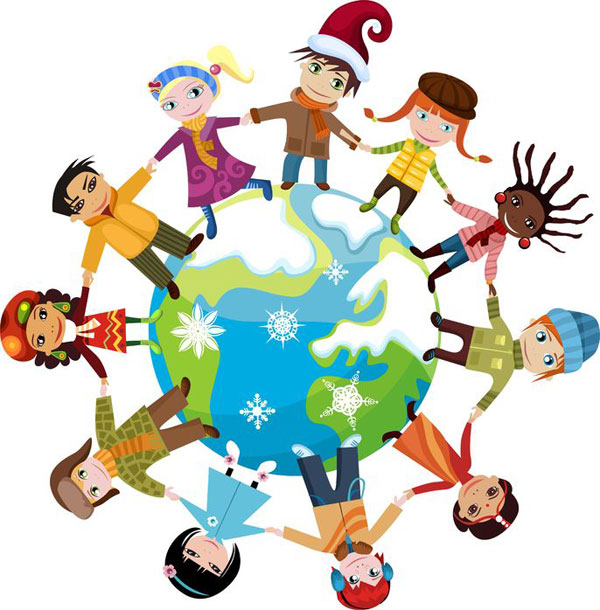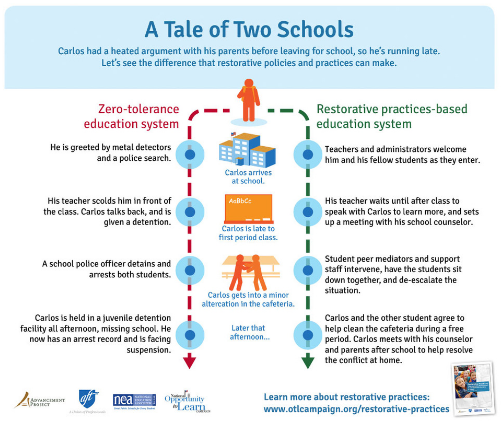
This image represents a harm-focused, reactive approach popularized by the Criminal Justice System. Austin ISD is taking a proactive, education-focused whole child, whole adult, whole community approach to Restorative Practices. #RPAustinISD
Austin ISD is planning for a Culturally Responsive Restorative Practices (RP) approach in its schools. The district recognizes the need to address systemic inequities and improve campus climates and cultural proficiency. The faculty, staff and administrators in the Akins vertical team, for example, have received basic training in Culturally Responsive RP to begin their restorative journey. Other schools around the district are exploring community-building circles in classrooms and with faculty and staff to deepen connectedness and build campus culture. So what exactly are Culturally Responsive Restorative Practices, and how do they fit into our district’s push to increase student voice, close achievement gaps, and address disciplinary action inequities?

In Austin ISD, Culturally Responsive RP are rooted in these Core Assumptions for the whole child and whole adult:
THE TRUE SELF IN EVERYONE IS GOOD, WISE AND POWERFUL
The core self may not be reflected in how people behave, but beneath the masks we adopt is a deeper, healthier self.
THE WORLD IS PROFOUNDLY INTERCONNECTED
What we do to others, we are also doing to ourselves although we may not always be aware that this happening.
ALL HUMAN BEINGS HAVE A DEEP DESIRE TO BE IN GOOD RELATIONSHIP
All people want to love and be loved and all people want to be connected.
ALL HUMANS HAVE GIFTS; EVERYONE IS NEEDED FOR WHAT THEY BRING
All gifts are indispensable to the well-being of the whole.
EVERYTHING WE NEED TO MAKE A POSITIVE CHANGE IS ALREADY HERE
There are rich reservoirs of talent and wisdom within our communities waiting to be accessed.
HUMAN BEINGS ARE HOLISTIC
There is a connection between the mind, body, and spirit in all that we do.
WE NEED PRACTICES TO BUILD HABITS OF LIVING FROM THE CORE SELF
We need practices which help us connect to our core self so we can live in alignment with our values and build healthy relationships in families and communities.
Adapted from: “Heart of Hope Resource Guide” Suffolk University, Center for Restorative Justice Carolyn Boyes-Watson and Kay Pranis 2009
Because the very nature of Culturally Responsive Restorative Practices is doing it with, rather than to, an individual or community, schools exploring RP are introducing it authentically in ways that best serve that campus. Community circles are generally done with a centerpiece, to focus thoughts and words, and a passed-around talking piece, to hold space for equity of voice. However, circles can look lots of different ways! Here are some pictures of how Restorative Practices look around our district right now.

Ms. Polk facilitates a circle with 7th graders in her classroom at Martin Middle School.

Secondary and elementary staff from the Discipline Alternative Learning Placement campuses debrief a professional development activity in community circles.

Staff from the Akins Vertical Team model a community circle during an RP training (for the whole vertical team!)
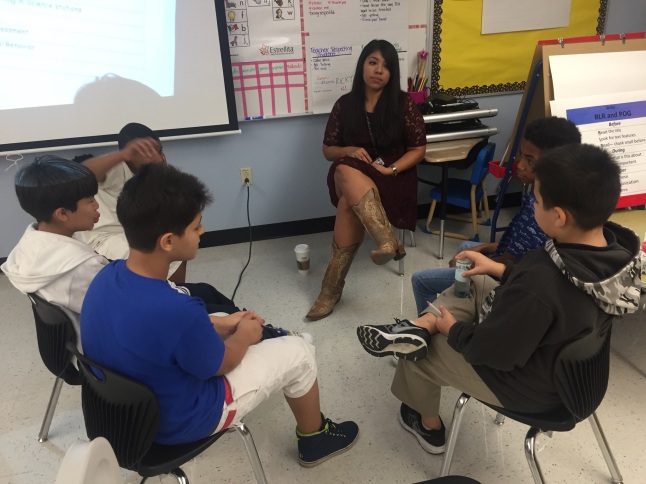
Ms. DeLaTorre at Walnut Creek Elementary facilitates a circle with her 5th graders.
Though these pictures are from all around our district, every one of them shows people talking to each other in circles. The circle is the hallmark of Culturally Responsive Restorative Practices, which is rooted in the ancient indigenous tradition of forming circles to communicate effectively in community. Austin ISD is exploring a whole school, whole child, whole adult Culturally Responsive Approach to Restorative Practices. Although circles are the most visible piece of the process, restorative practices is #MoreThanCircles. Restorative practices provides a framework that helps us create a school culture and climate that is safe, welcoming and inclusive. The AISD Social and Emotional Learning team supports Culturally Responsive RP community-building circles. We are excited about the deep Restorative Practice work beginning in Austin ISD, and look forward to seeing it serve the social and emotional needs of all our students and staff! We are #AISDProud that we are continuously working on #AISDEquity!
Check out this Restorative Practices Twitter chat from December 2016 to experience part of the larger, real conversation that is helping to move our Culturally Responsive RP journey forward. For more information about Austin ISD Culturally Responsive Restorative Practices, contact Angela Ward (cultural.proficiency@austinisd.org), who collaborated on this blog post!


